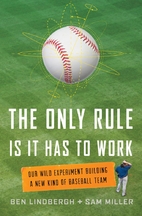
This is a disaster book, about the destruction and rebirth of the Earth. In this story, the Moon breaks up from an unknown cause, the parts continue to fracture and fall onto the Earth until the Earth is deluged by fragment impacts causing the atmosphere to heat up and much of the surface to become molten.
The book is in three parts. In the first, the disaster is looming and people are trying to prepare for survival of the race or preparing for their own end. The second part sees the destruction of the Earth, the numbers in space are dwindling in their effort to survive both natural disasters and each other. The final part is the re-terraforming and resettlement of Earth, discovery of people who sheltered themselves on the Earth, and new political struggles.
Seeing the impending doom, humanity unites and elects to send select people into space, each country is to select two candidates to send. There is some conflict, and there are extreme reactions to them, but thing generally go too smoothly.
In space there is a lot of struggling to survive. The science is good, and the reader will pick up some basic orbital mechanics and physics on the way. One billionaire manages to ride his own rocket into space. But rather than a burden, he flies out to collect a comet for fuel – and meets his own disaster when the reactor that fuels his ship leaks. One politician resembling Hillary Clinton, uses her influence to get into space, then turns the space colonies into a political battleground. I found her character to be foolish and unlikable, I admit that don’t care for real politics in my fiction. She is one of the last surviving women, the seven Eves, who are to repopulate the human race. Without surviving men, they use parthenogenesis to repopulate and ‘improve’ their progeny. Each Eve is permitted one improvement in her offspring.
The third part of the book involves finding survivors on the Earth’s surface. The world has already been terraformed. We learn that each of the eves have created seven races of humans, with both physical and mental differences. Their differences reflect the personality of the Eve that sired their race.
Conflict comes when they encounter the survivors, who claim the surface of the world as their domain. These people lived deep in caves with massive provisions to get them through the apocalypse. Politics leads to battle and eventually compromise. You see the beginnings of politics as normal in all their relationships.
I had a number of issues with the story. Early in the book, it seemed people were too accepting of their fates. You didn’t see people becoming extremely religious, no survivalists, no people looting to get the most they can for their personal last days. They may have been unimportant to the story, but it seems like it should have been mentioned. There was only one instance of resistance to the policy of getting people into space, even that required an organized nation to mount. This just isn’t my view of a world-wide disaster that has no hope of survival.
Other issues such as, people who have lived in space for 5000 years have no problems adapting to gravity, when our astronauts have trouble after a matter of months. Would they even be interested in going someplace they’ve never been?
People who lived underground had no problems adapting to the sunlight. They had lighting, but it wouldn’t be close to the same. I suspect they would have lowered the lighting levels over time as they continued to adapt.
Generally, the third part of the book felt like a different book from the first two. It had too much content that was nothing more than descriptions of neat new technologies. a little of it was valuable to the story later on, but I glossed over most of it. The book is already too long for its value, taking most of this out would have helped.
I also have to wonder why the seven races didn’t interbreed. With the enlarged gene pool, it would have enhanced humanity and brought the genetic advantages to all humans. But it wouldn’t have made as interesting of a story.
The ‘white sky’ should have been darker, more eclipse-like as small fragments cast massive shadows over the earth similar to the rings of Saturn. I don’t see a couple of years being sufficient to have fragments in polar orbits, so the sky coverage wouldn’t have been complete. This would have made the poles have glowing arcs around them at night.
The books name refers to the fact that there are seven women, or Eves, that plan to repopulate the human race. It is also a palindrome, which made me think about the destruction and rebirth of the Earth and of the human population. The seven Eves being the pivotal point and the low point of the population.
Overall, the books is enjoyable. It is one of the more interesting disaster books that I’ve read, but I can’t recommend it that highly due to the issues I’ve raised.









